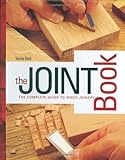

Arbor Plans, Barn Plans, Bat House Plans, Bed Plans, Bedroom Plans, Bee Hive Plans, Bench Plans, Billiard Table Plans, Bird Feeder Plans, Birdhouse Plans, Boat Plans, Book Case Plans, Box Plans, Bridge Plans, Bucket Plans, Cabin Plans, Cabinet Plans, Camping Plans, Candle Plans, Carport Plans, Cart Plans, Cat House Plans, CD&DVD Holder Plans, Cellar Plans, Chair Plans, DIY Projects Chest Plans, Chicken House Plans, Children Room Projects Clock Plans, Coaster Plans, Coffee Table Plans, Cold Frame Plans, Compost Bin Plans, Computer Desk Plans, Containers Plans, Cradle Plans, Craft Plans, Cutting Board Plans, Deck Plans, Desk Plans, Dog House Plans, Door Plans, Dresser Plans, Drill Press Plans, Easel Plans, Entertainment Projects Farmshop Plans, Fence Plans, File Cabinet Plans, Fireplaces & Mantel Surrounds Frames Plans, For Kids Garage Plans, For The Garden Gazebo Plans, Greenhouse Plans, Guitar Plans, Gun Cabinets Hammock Plans, Home Office Projects Horse Barns Humidor Plans, Hutch Plans, Jig Plans, Kitchen Projects Knife Block Plans, Lamp Plans, Landscaping Plans, Lathe Plans, Mailbox Plans, Mantel Plans, Media Center Plans, Mirror Plans, Miscellaneous Ottoman Plans, Outdoors Projects Pergola Plans, Planter Plans, Playhouse Plans, Rabbit House Plans, Rack Plans, Router Plans, Screen Plans, Scroll Saw Plans, Shed Plans, Shelf Plans, Signs&Displays Sports Related Plans, Squirrel Den Box Plans, Stand Plans, Stool Plans, Storage Plans, Swing Plans, Table Plans, Tool Box Plans, Plans, for Wooden Toys Tray Plans, Trellis Plans, Utility Building Plans, Wagon Plans, Weather Station Plans, Wind Generator Plans, Windmill Plans, “Wishing Well” Plans
The specs of ‘Joint Book: The Complete Guide to Wood Joinery’ are:
- Publisher: Chartwell Books, Inc. (2009-03-21)
- Language: English
- ISBN-10: 0785822275
- Product Dimensions: 8×6.4×0.8 inches
- Shipping Weight: 1.1 pounds
Here are some REAL customer reviews:
“Small, usable, super helpful”
“x8″. Every page is filled with diagrams and color drawings illustrating every joint that's used in American woodworking. There are plenty of color photos… Read more
“THE joinery book for EVERY woodworker”
This book is simply amazing. It shows you any joint you could ever want to build and how to do it and it does it with full color photos and drawings. There is not a single page of fluff. Every page gets right to the point and tells you what you need to… Read more
“Awesome”
So many books show the woodworker bent over the project instead of the actual pieces of the project coming together. This book shows detailed, helpful pictures of each step of the many different joints. The spiral-bound format makes it ideal for the… Read more
Woodworking shop in Germany in 1568, the worker in front is using a bow saw, the one in the background is planing
Among early finds of wooden tools are the worked sticks from Kalambo Falls, Clacton-on-Sea and Lehringen. The spears from Schöningen Germany provide some of the first examples of wooden hunting gear. Flint tools were used for carving. Since Neolithic times, carved wooden vessels are known, for example, from the Linear Pottery culture wells at Kückhofen and Eythra. Examples of Bronze Age wood-carving include tree trunks worked into coffins from northern Germany and Denmark and wooden folding-chairs. The site of Fellbach-Schmieden in Germany has provided fine examples of wooden animal statues from the Iron Age. Wooden idols from the La Tène period are known from a sanctuary at the source of the Seine in France.
Two ancient civilizations that used woodworking were the Egyptians and the Chinese. Woodworking is depicted in many ancient Egyptian drawings, and a considerable amount of ancient Egyptian furniture such as stools, chairs, tables, beds, chests has been preserved in tombs. As well, the inner coffins found in the tombs were also made of wood. The metal used by the Egyptians for woodworking tools was originally copper and eventually, after 2000 BC bronze as ironworking was unknown until much later.[1] Commonly used woodworking tools included axes, adzes, chisels, pull saws, and bow drills. Mortise and tenon joints are attested from the earliest Predynastic period. These joints were strengthened using pegs, dowels and leather or cord lashings. Animal glue came to be used only in the New Kingdom period.[2] Ancient Egyptians invented the art of veneering and used varnishes for finishing, though the composition of these varnishes is unknown. Although different native acacias were used, as was the wood from the local sycamore and tamarisk trees, deforestation in the Nile valley resulted in the need for the importation of wood, notably cedar, but also Aleppo pine, boxwood and oak, starting from the Second Dynasty.[3]
Damascene woodworkers carving wood for hookahs, 19th century.
The progenitors of Chinese woodworking are considered to be Lu Ban and his wife Lady Yun, from the Spring and Autumn Period. Lu Ban is said to have brought the plane, chalk-line, and other tools to China. His teachings are supposedly left behind in the book Lu Ban Jing 經, “Manuscript of Lu Ban”, although it was written some 1500 years after his death. This book is filled largely with descriptions of dimensions for use in building various items such as flower pots, tables, altars, etc., and also contains extensive instructions concerning Feng Shui. It mentions almost nothing of the intricate glue-less and nail-less joinery for which Chinese furniture was so famous.
Get Joint Book: The Complete Guide to Wood Joinery at the best price available today.

